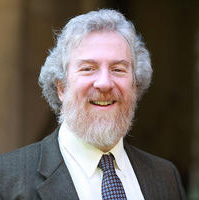
Tisha Be’av
Jul 8, 2013 By Samuel Barth | Commentary | Tishah Be'av
These words will reach you during the nine days that lead to the fast on Tish’ah Be’Av, the day we mourn the destruction of the first and second Temples and many other tragedies of Jewish history. It is traditionally a complete fast—from sunset until sunset—with Yom Kippur the only other such fast day in the Jewish calendar. There is a Hasidic teaching that no halakhah concerning fasting on these days is needed, for “on the black fast of Tish’ah Be’Av, who could eat, and on the white fast of Yom Kippur, who needs to eat?”
Read More
Turn Aside (Haseir) Evil Forces
Jun 25, 2013 By Samuel Barth | Commentary
Last week, we began to explore Hashkiveinu, the blessing unique to the evening service that asks for peace through the night and renewed life in the morning (Siddur Sim Shalom for Weekdays, 140).
Read More
“To Life. . .to Peace”—Answers to the Terrors of the Night
Jun 19, 2013 By Samuel Barth | Commentary
Anomaly invites interpretation. There is a clear pattern to the texts surrounding the Shema’; a pattern that is consistent in the morning and the evening. Two blessings precede the biblical Shema’, one concerned with the natural cycles of light and darkness, and the second exploring the Torah as vehicle for divine love. Following the Shema’, the theme turns to redemption—recalling slavery and liberation, ending with praise to God, “Ga’al Yisrael” (Redeemer of Israel). In the morning we move directly from the blessing of redemption to begin our core prayer, the ‘Amidah.
Read More
Evening . . . Mixtures and Beauty
Jun 12, 2013 By Samuel Barth | Commentary
The rhythm of light and darkness is deeply embedded in our humanity. Even if we do not know the precise time (in hours and minutes), we are conscious of the cycle of day and night. The onset of night, as evening falls, is often associated with some sense of foreboding, and the dawning of each new day holds hope and promise. Light is associated in many sources with good, with hope, even with messianic redemption: “a sun of righteousness . . . and healing” (Malachi 4:2). Our liturgy speaks of the transition between day and night, and uses the phrase “uma’avir yom umeivi laila” (God causes the transition from day to night). Using a verb that suggests an unfolding process, rather than an abrupt disjunction, reflects the natural flow of dusk, sunset, and night.
Read More
Subversive Prayer . . . Necessary Trouble
Jun 5, 2013 By Samuel Barth | Commentary
Read More“Prayer is meaningless unless it is subversive, unless it seeks to overthrow and to ruin the pyramids of callousness, hatred, opportunism, falsehood. The liturgical movement must become a revolutionary movement, seeking to overthrow the forces that continue to destroy the promise, the hope, and the vision.”[1]

Harshness—Us and Them
May 29, 2013 By Samuel Barth | Commentary
In the preliminary service (Siddur Sim Shalom: A Prayerbook for Shabbat, 66), there is a short paragraph remarkably written in the first person singular—using “I” rather than “we.” In the Talmud (BT Berakhot 16b), there are a number of personal prayers of the Sages, the prayers that they would say at the end of the ‘Amidah. This text is attributed to Rabbi Yehudah HaNasi and is inserted at this point in the service because it is similar in theme to the previous paragraph. There is a telling, and sometimes uncomfortable, phrase that begins very innocently, “tatzileini hayom . . . me’azei panim” (save me this day from those with “hard faces” [from the arrogant]). This is a reasonable hope and a fine, if unremarkable, prayer; it would be good to pass a day (or even longer) without encountering others who are arrogant. But that is not the end of the sentence. The prayer of R’ Yehudah continues, “ume’azut panim” (and from my own “hard face” [my own arrogance]).
Read More
Love—Great and Eternal
May 24, 2013 By Samuel Barth | Commentary
The first paragraph of the Shema’ invites us to affirm the unity of God, and then engages the topic of love, the love from a person to God: “ve’ahavat et Adonai Eloheykha” (You shall love Adonai your God). Several important questions present themselves. First, is the phrase “you shall love” to be understood as an imperative? The grammar supports such a construction, leading us to wonder how love can be commanded. A command can be given to bring specified sacrifices, to eat matzah on Pesah, and to show deference to the old, but how can we be commanded to love? Some commentators avoid the dilemma by suggesting the meaning is that we are to behave in a way that would express our love for God, but this avoids the deeper question about how and why this love for God is born in our hearts and minds.
Read More
Shavu’ot—Hide and Seek with Torah
May 14, 2013 By Samuel Barth | Commentary | Shavuot
In the kiddush we recite this evening, and in all the traditional services of Shavu’ot, we speak of “chag haShavuot hazeh, z’man mattan Torateinu” (This Festival of Shavu’ot, season of the giving of our Torah. [Siddur Sim Shalom for Shabbat and Festivals, 42]). There is a subtle yet subversive element to this description of the day: the parallels for Pesah and Sukkot speak of the “season of our liberation” and “season of our rejoicing,” each of which can reasonably be derived from biblical sources; however, there is no biblical source that associates Shavu’ot with the giving of the Torah at Sinai. Shavu’ot is called chag haKatsir in association with the harvest (Exod. 23:16), and the name Shavu’ot derives from the 49 days of counting the Omer after Pesah; the Talmud (BT Pesachim 68b) even uses the term Atzeret (conclusion), seeing the day as “concluding” Pesah much as Shemini Atzeret serves as conclusion to Sukkot.
Read More


